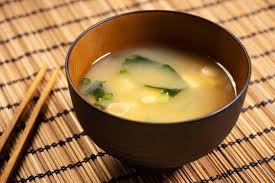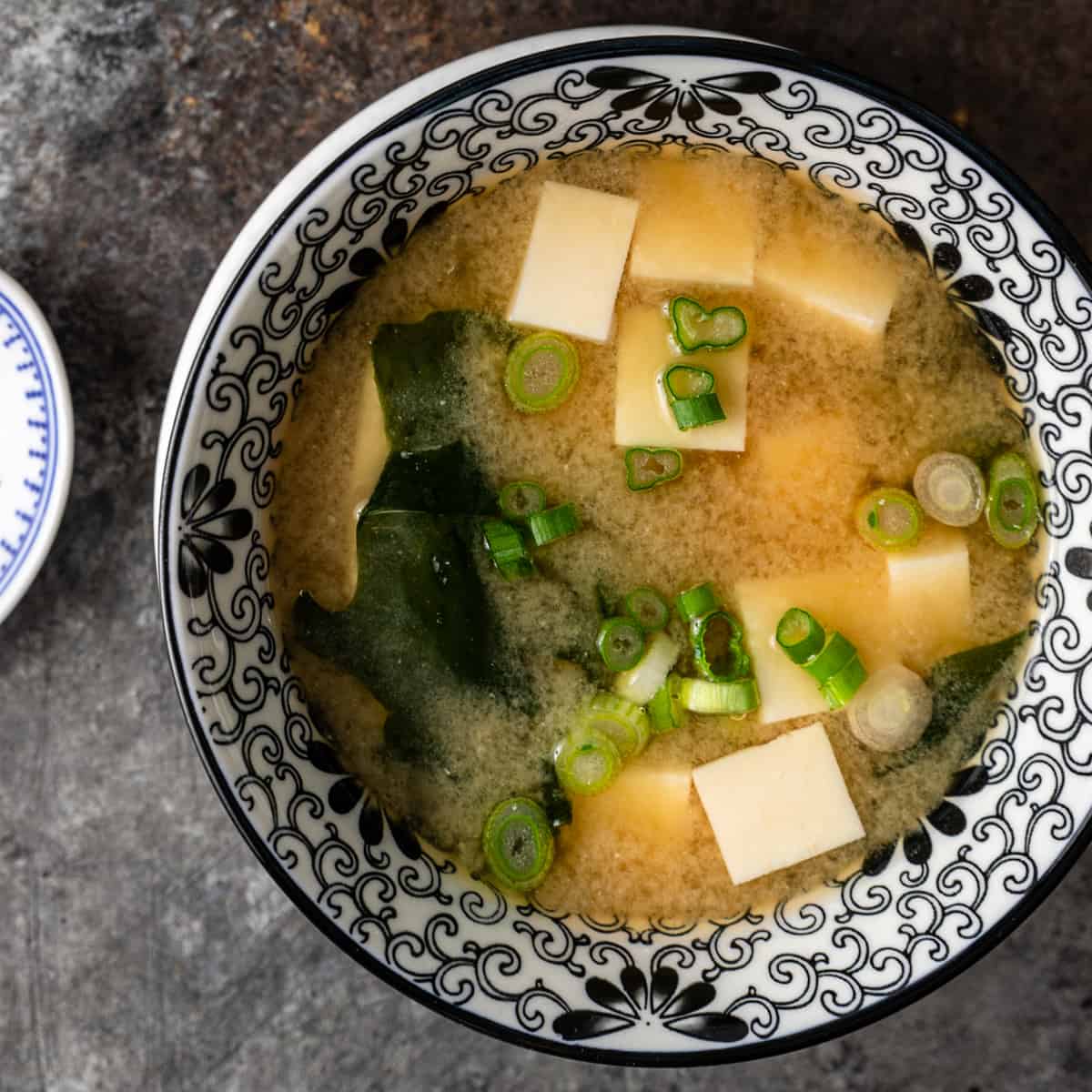Miso soup is more than just a starter; it is the comforting, nourishing foundation of nearly every traditional Japanese meal, served from the breakfast table to the late-night diner.2 This cloudy, savory, and warming bowl is an essential expression of Ichiju Sansai (one soup, three side dishes), the ideal traditional meal format.
The Two Core Ingredients
The elegance of Miso Shiru lies in its simplicity, being fundamentally composed of just two things:
- Dashi (出汁): The Umami Base: Dashi is the true soul of Japanese cuisine. It’s a simple stock, typically made by steeping kombu (dried kelp) and simmering katsuobushi (dried bonito flakes).3 Dashi provides the deep, savory umami that is the signature flavor of the soup.4 (For a vegetarian version, shiitake mushrooms or just kombu are used.)
- Miso (味噌): The Fermented Flavor: Miso is a paste made by fermenting soybeans with salt and koji (a fungus culture), often mixed with grains like rice or barley.5 It comes in different varieties (white, yellow, red), each offering a distinct flavor profile from mild and sweet (shiro miso) to earthy and deeply savory (aka miso).6
The Rules of Miso
Making great miso soup is less about complicated technique and more about respecting the ingredients. The key rule, known by every Japanese home cook, is: Never boil the miso. Boiling the paste destroys the beneficial probiotic bacteria and, more importantly, diminishes the delicate fragrance and flavor of the miso. The paste should always be dissolved gently into the hot dashi just before serving.
With its infinite capacity for seasonal variations—adding tofu and wakame in spring, root vegetables (Tonjiru) in winter, or clams (Asari) in summer—Miso Soup is a versatile, healthy, and deeply satisfying staple that anyone can master.7

Recipe: Classic Tofu and Wakame Miso Soup
This recipe uses a quick dashi method for convenience.
Yields: 4 servings
Prep Time: 5 minutes
Cook Time: 10 minutes
Ingredients
- $4\text{ cups}$ Dashi stock (See note below, or use $4\text{ cups}$ water + $1\text{ tsp}$ dashi powder)
- $4\text{tbsp}$ Miso paste (White or Awase Miso are recommended for a milder flavor)8
- $4\text{oz}$ Silken or medium-firm Tofu, cut into 9$\frac{1}{2}\text{-inch}$ cubes10
- $1\text{tsp}$ Dried Wakame Seaweed11
- $1$ Scallion (Green Onion), thinly sliced, for garnish12
Instructions
- Rehydrate the Wakame: Place the dried wakame in a small bowl and cover with a little warm water.13 Let it soak for $5$ minutes. It will expand significantly. Drain the water and set the rehydrated wakame aside.
- Prepare the Broth: Pour the dashi (or water and dashi powder) into a saucepan and bring it to a gentle simmer over medium heat.
- Add Ingredients: Add the cubed tofu to the simmering broth.14 Simmer for about 15$2$ minutes to warm the tofu through.16
- Dissolve the Miso: Reduce the heat to low or turn it off entirely.17 Ladle a small amount of the hot broth into a separate small bowl. Add the miso paste to this small bowl and whisk it thoroughly until it is completely dissolved into a smooth slurry.18
- Finish the Soup: Pour the smooth miso slurry back into the saucepan with the remaining broth and stir gently to combine.19CRITICAL STEP: Do not let the soup come to a boil after the miso is added.
- Serve: Stir in the rehydrated wakame just before serving. Ladle the soup into bowls and garnish each with a sprinkle of sliced scallions. Serve immediately.
Dashi Note: A quick dashi can be made by simmering $4\text{ cups}$ of water with a $4\text{-inch}$ piece of kombu for $10$ minutes (removing before boiling), then turning off the heat and steeping $\frac{1}{2}\text{ cup}$ of katsuobushi for $5$ minutes before straining.


Leave a Reply